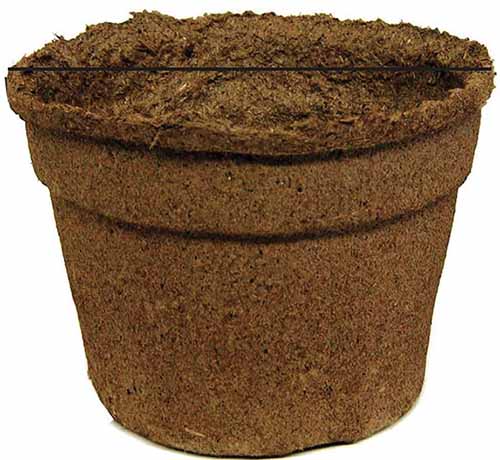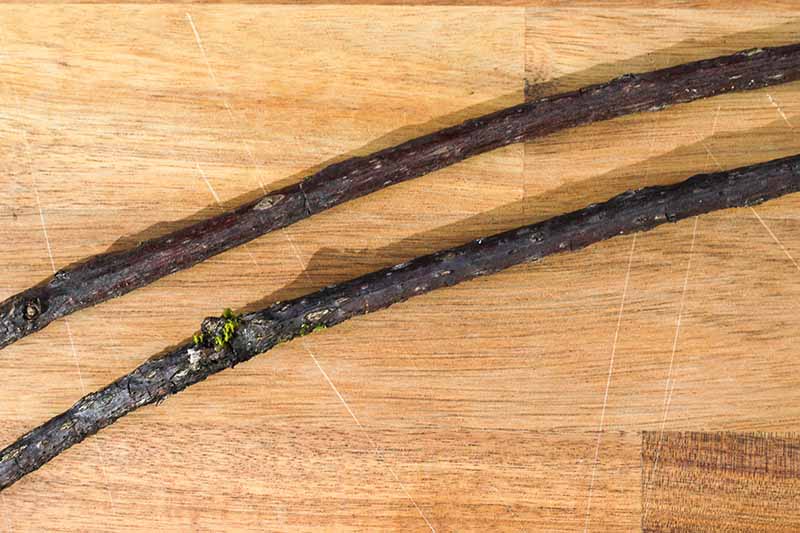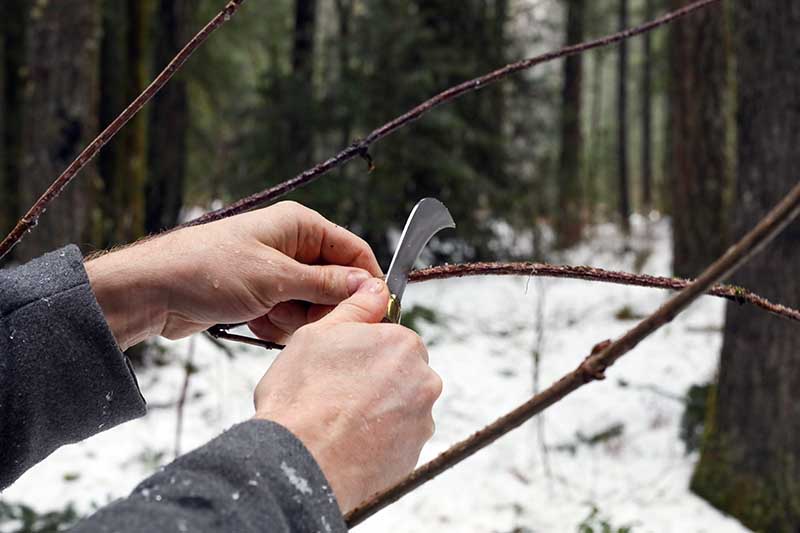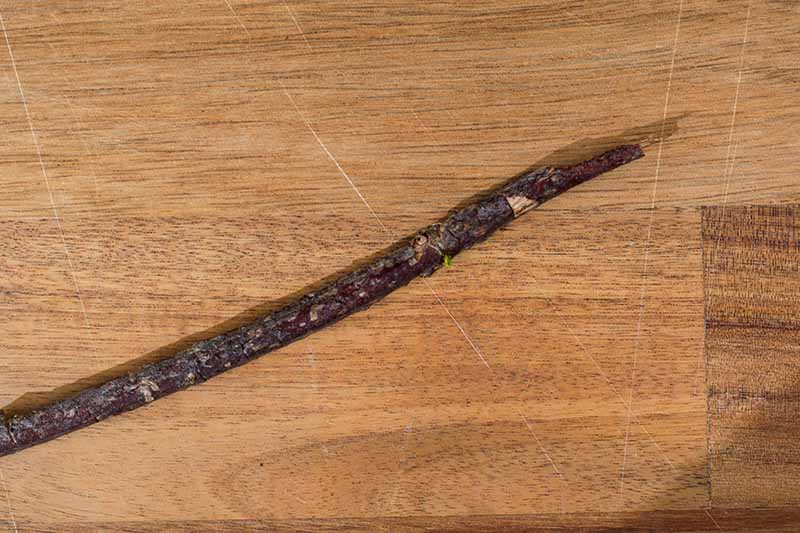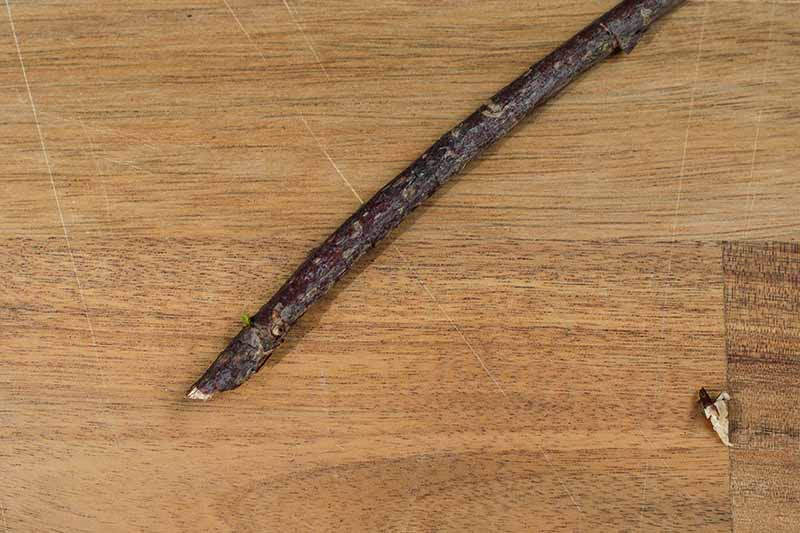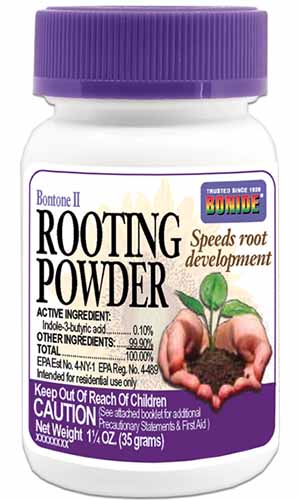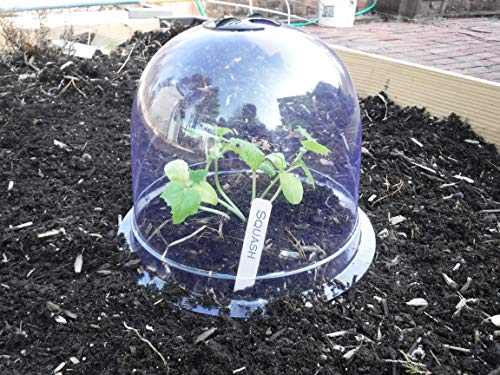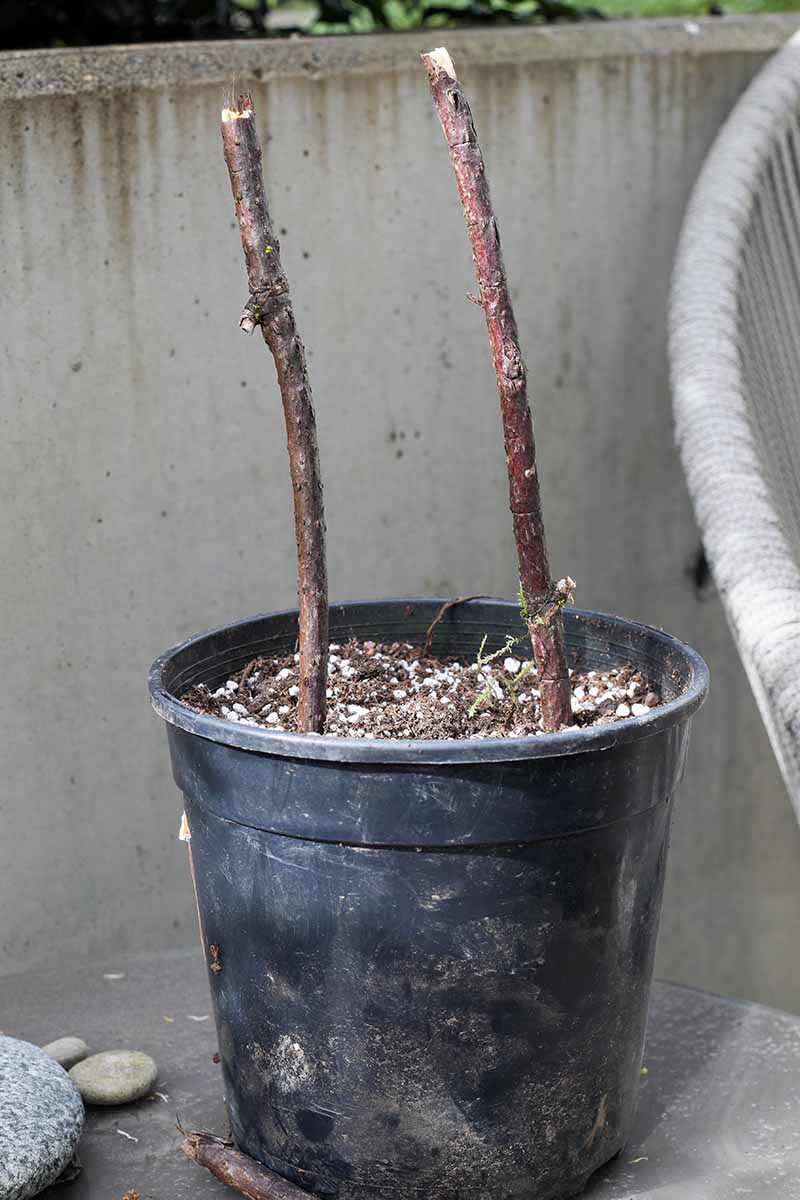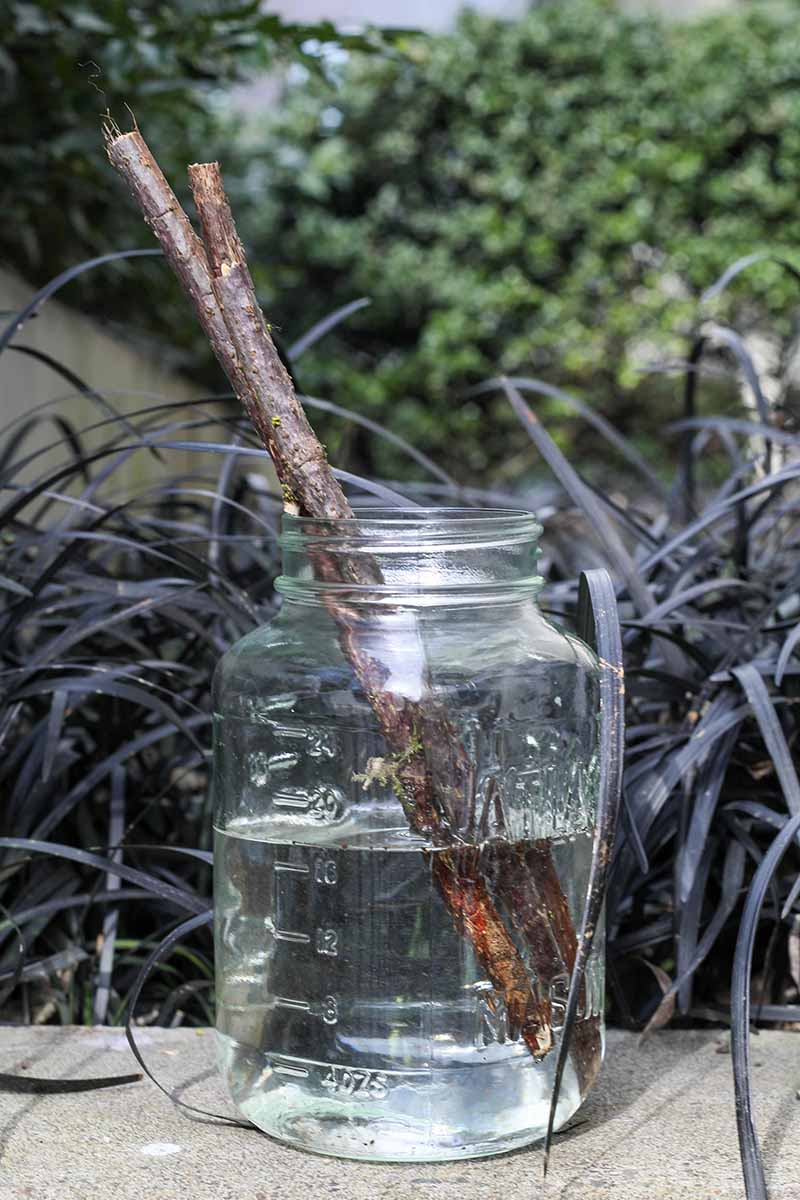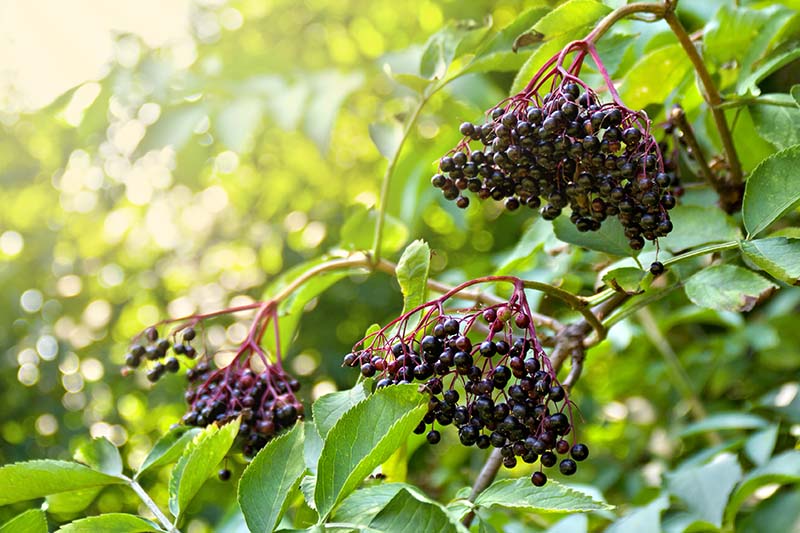Sure, you can buy elderberry plants. But it’s so easy to propagate them from cuttings that there’s no reason not to give it a go. Incidentally, if you’re new to rooting cuttings taken from trees and shrubs, then you’ve picked the right plant to start with. Elderberry is one of the most reliable plants I have ever propagated this way. We link to vendors to help you find relevant products. If you buy from one of our links, we may earn a commission. If you want, you can forage a plant to take cuttings from. Elderberries grow wild in North and South America, Europe, and Asia, so lots of people may have the opportunity to find one in their neck of the woods. Alternatively, select branches from a mature cultivated plant in a generous neighbor’s yard, or create new plants from one you’re already growing. If you have a plant that you particularly love – maybe it produces abundantly, or has large berries – I highly recommend propagating it this way. Ready to get started? Here’s what we’ll go over:
Getting Things Ready
Before you head out to the garden, you’ll need to gather a few supplies. First, you need a sharp pair of clippers. Clean them with a solution of one part bleach to 10 parts water. This helps to prevent the spread of disease. If you plan to root them in water, you’ll need several jars to hold the cuttings while they root. Quart or pint-sized Mason jars work great. You’ll need some rooting hormone powder or gel, containers, and potting medium if you don’t plan to use the water method. Use individual containers or even a large bucket for multiples. I prefer to use a four or six-inch compostable option like CowPots™, which aren’t made out of peat, a limited resource. CowPots Biodegradable Containers Arbico Organics sells a pack of 42 six-inch pots if you decide to go this route. I find individual pots are easier to work with than a single large container when moving them around or at transplanting time. If you own the plant you’re taking a cutting from, you’re all set. If it’s on public land, make sure to check your local regulations before snipping. And of course, if it’s on private land, seek permission from the owner. Take a basket or bag with you to collect hardwood cuttings in. If you’re taking softwood, have a jar of water with you to store the wood in while you work.
Preparing Stem Cuttings
Elderberries are perennial hardwood plants in the Sambucus genus. They go dormant during the winter, and flower in the late spring or early summer. Shortly after, they form fruit that can be used in the kitchen or the medicine cabinet. Plants may be propagated from either hardwood or softwood cuttings.
Hardwood
Hardwood elderberry cuttings should be taken when the plant is dormant. The timing can vary by region, but this typically takes place from January to March, depending on your climate. Just peek outside at your plant and look for any green growth or buds breaking. No growth or budding? It’s time. Look for branches that are about the diameter of a pencil, and try to take cuttings that are about six to eight inches in length and include at least two to four nodes. Nodes are the spots where new leaves and branches emerge. Look for a branch with lots of lenticels. These are the little bumps all over the branch and they work like pores, enabling gas exchange. You also want to choose a branch that is free of any signs of disease, like mold, mildew, or cracks. The wood should be brown, not green. There are two ways to take your hardwood cuttings. The first is to simply snip the stem with a pair of clippers or a sharp knife. I like to cut the bottom at a 45-degree angle and cut the top straight, so I know which way is up when planting. If it is inserted in water or soil upside down, it won’t root. Another method is to gently bend the branch and pull it down at the joint so that some of the bark comes with the cutting as you pull it away, creating a sort of heel or tail of bark. Trim that tail with pruners so it’s about half an inch long. This is called a heel cutting. This method exposes the cambium layer of the plant, which contains hormones that aid in rooting.
Softwood
Softwood cuttings should be taken in the summer while the plant is actively growing, but before the fruit forms. This is generally in late June through late July. Softwood is the young, lighter brown or green new growth that has formed during the current growing season. As with hardwood, look for a branch that is about the diameter of a pencil and take a cutting six to eight inches in length, taking care to include at least two to four nodes. Choose a branch with healthy looking leaves as well as lots of lenticels. To plan ahead for the possibility of a few of your starts failing, it’s best to take more than you need. You can always toss or give away the extras if they all survive. Take softwood cuttings the same way you would hardwood cuttings, using a pair of clippers to cut straight through at a 45-degree angle. Note that heel cuttings don’t work on softwood.
Rooting in Soilless Potting Medium
Of the three rooting methods that I describe here, this one is regarded as the most reliable method to grow healthy transplants. I’ve found cuttings tend to grow more quickly and robustly in a soilless medium, and the experts at the Missouri Botanical Garden agree, claiming plants generally develop a better root system when planted in a soilless medium rather than water. Rooting in a soilless potting medium is a bit more challenging than water since you can’t see if any roots are forming, and you’ll need to do some extra investigation to figure out when it’s time to transplant. If it has been more than a few hours since you took your cuttings, make a new cut at the base of each and dip it in rooting hormone gel or powder. Mother Earth Potting Mix You can also make your own mix by combining half sphagnum peat moss and half vermiculite. I find a powder is easiest to work with, and Bontone makes a good option that I’ve had lots of success with. Place softwood cuttings in the medium so they’re buried by a third. Hardwood should be buried so the lowest node is two inches below the surface of the medium. Bontone II Powdered Rooting Hormone Use a stick or pencil to poke a hole in the medium. This helps ensure more of the rooting hormone stays on the end of the branch as you insert it into the medium. You can use individual four- or six-inch containers, or use one large container and space them about four to six inches apart. I prefer to use CowPots™ because they can be put directly in the ground, so there’s less disturbance to the roots. Water the medium thoroughly so that it feels like a well wrung-out sponge. Tent some clear plastic over the pot to help retain moisture. Just make sure it isn’t touching the plant at all. Place in a cool indoor location out of direct sunlight and keep the medium moist but not wet. The ideal temperature is about 50°F with some indirect sunlight coming in, so a basement spot near a window might be ideal. GrowAway Plastic Mini Greenhouse Every three days, remove the cover and give the plant a misting. Check the medium to make sure it is still moist, and add water if it’s starting to dry out. After eight weeks, gently pull on a cutting. It should resist, indicating that it has developed roots. It may also have developed buds or young leaves by this point. If so, there’s no need to tug on it to check! Trim away about half of any new growth to encourage the plant to focus its energy on developing healthy roots. All that hard work paid off, and now it’s time to put your rooted cuttings in the ground. Warning: you’re entering the danger zone! If you’re going to kill your new plant, it will likely be during this stage. That’s because young plants grown from cuttings have fragile roots – all the more reason to use biodegradable pots to grow your new starts in, since there’s less root disturbance. Once spring rolls around and the danger of frost has passed, harden them off for a few weeks. To do that, take your plants outside for an hour and put them in a sheltered spot. The next day, put them in the same spot for two hours. Add an hour each day until they can stay outside all day. When soil temperatures reach 50°F, it’s time to start digging. Gently remove a cutting from its container, but don’t tap away or remove any excess soil. Try to keep the soil ball as intact as possible. Dig a hole that is twice the width of the existing root ball. Lower the cutting in place and fill around it with new soil. Using a peat container or CowPot™? Dig a hole twice the width of the pot and plant it, pot and all, in the ground. Fill in around it with soil. Then, treat it as you would an existing elderberry bush. Not sure how to do that? Our elderberry growing guide has got your back. Just keep in mind that a young cutting has a small root system, so you need to be diligent about keeping the soil moist.
Rooting in the Garden
If you want to skip the extra work of transplanting, you can put cuttings directly in the garden. Since it’s best to take cuttings in the winter or early spring, you may need to store them until you can plant them. If this is the case, wrap the branches loosely in plastic and put them in a cool, dark spot until it’s time to plant. They can be stored this way for up to six months. Then, once the soil is workable and all chance of frost has passed in the spring, soak the cuttings in water for about an hour before planting. If you live in an area where the soil can be worked in the winter, you may opt to plant directly after taking the cuttings. This allows Mother Nature to decide when to let the plant break dormancy. Regardless of when you plant, dip the cut ends in powdered rooting hormone and use a pencil or chopstick to make holes in the ground about six feet apart. Insert each cutting into the ground so the bottom node is covered by two inches of soil. Pack soil tightly around each cutting so it stays upright. Don’t use sticks or anything else for support. Keep the soil moist if the rain doesn’t take care of it for you. Optionally, use a cloche and/or heap mulch around the stems to help retain soil moisture. A half inch of compost, straw, or dried grass should do the trick.
Rooting in Water
It’s also possible to root your cuttings in water, and if you feel more comfortable with this method, I say go for it. The advantage is that you can see the roots forming so you know whether it’s working or not, and you can more easily determine when your plant is ready to be transplanted. I’ve planted many water grown starts and have had plenty of success, so feel free to try it out and find what works best for you. To grow in water, remove leaves from the bottom half of the cuttings, but be sure to leave at least one set of leaves at the top. Set in a jar of water so the cutting is submerged by about half. Place in an indoor location away from direct sunlight. Change the water every few days. You should start seeing roots develop after about a month. You’ll want to keep growing the new starts in the water for a few more weeks to ensure that the roots are strong before you transplant. Expect fewer of your plants to survive using the water method as compared to rooting in soilless potting mix. Once you see roots developing, and perhaps new growth forming, you can put your plants into pots filled with soil. As described above, use either individual pots, or place multiple rooted cuttings in one large pot spaced about four to six inches apart. Fill each container with potting soil and make holes that are large enough to accommodate the root system. Gently lower each cutting into a hole, and bury about a third of the stem. Then, firm soil around each and water the soil so it feels like a well wrung-out sponge. When you’re ready to plant in the garden, harden the new plants off as described for rooting in in a soilless medium above before transplanting. To illustrate how easy this process is, I did a little experiment, pulling a branch from my existing mature shrub and sticking it in the soil a few feet away from the parent plant, with no additional prep and nothing in the way of attentive care. You probably won’t be surprised to learn that the cutting rooted and took off without any help from me. At one point before rooting, it even got knocked out of the ground by my rambunctious dogs. I stuck it back in the ground and wished it luck. By fall, I had a little elderberry bush growing. I’m not suggesting you do the same (in terms of ignoring your cuttings – but feel free to wish them luck!). Rather, I really want to emphasize that this isn’t a plant that is going to require a high level of commitment or excessive use of all your gardening talents to keep it alive. Now head out there and start growing! Once your elderberries are looking big and pretty, come back and share some images of your progress in the comments section below. We’d love to see how you get along! If you’re interested to learn more about elderberries, these articles will be useful for you to read next:
How to Use Elderflowers for Food and MedicineHow to Grow Elderberries in Pots and ContainersHow and When to Fertilize Elderberry Shrubs


